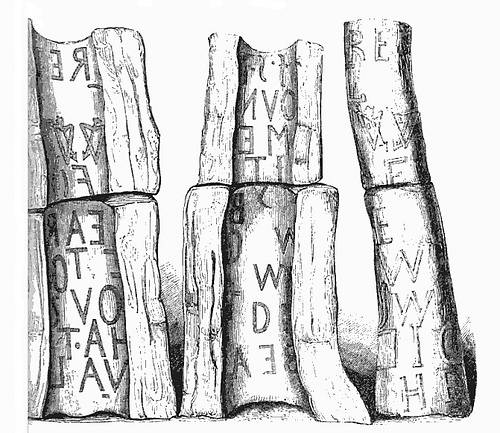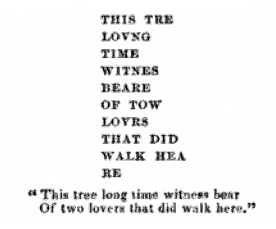
A very singular discovery of an inscription was made some time since at Coxwold, near Thirsk in Yorkshire. … An ash was … felled and split for firewood. Upon being riven asunder, the outer part of the tree was cleft in two like a case, leaving the inner portion of the trunk entire, and the following rude inscription was discovered, distinctly legible, both upon the inner part of the trunk, and with the letters inverted, upon the outer casing. The inscription can, without difficulty, be thus read:–
There is no date to the inscription, but … it would … appear that the tree has been cut down nearly a hundred years. Also, by the number of rings in the wood, each indicating a year’s growth, the tree appears to have been about fifty-five years old when the inscription was made, and to have subsequently grown for nearly two hundred years. The closeness of the rings under the circumference prevents this estimation of the date from being regarded as more than an approximation; but all the circumstances render it highly probable that the inscription was made about three centuries ago.
– Kazlitt Arvine, Cyclopaedia of Anecdotes of Literature and the Fine Arts, 1856

